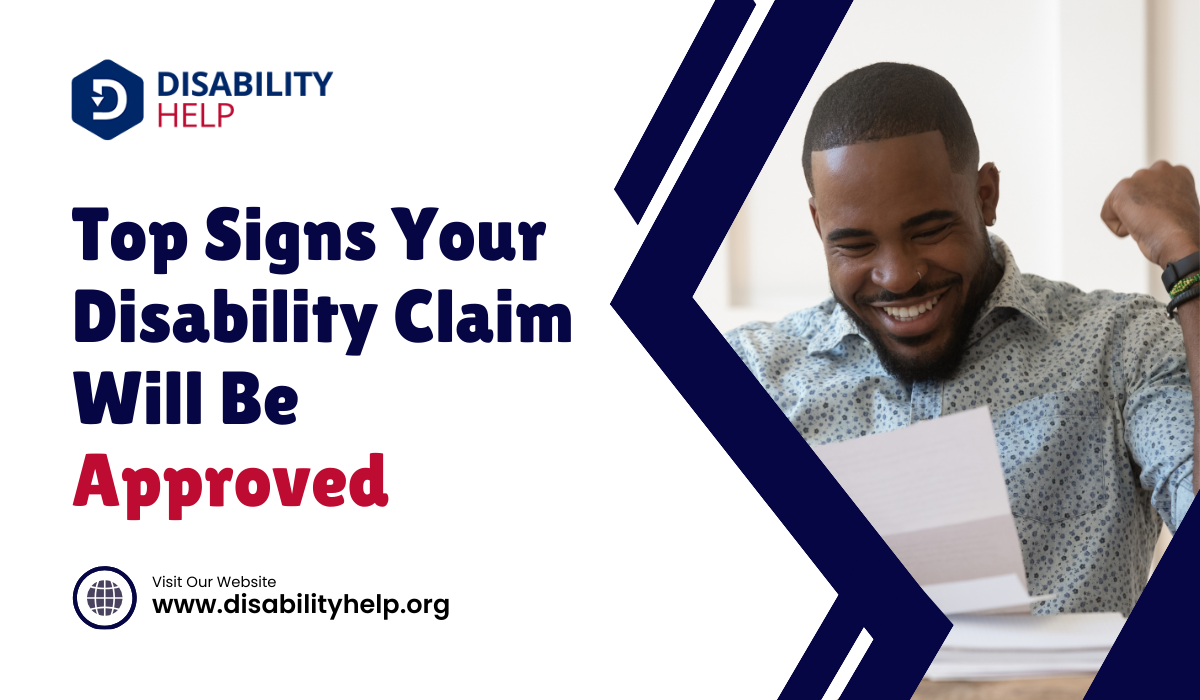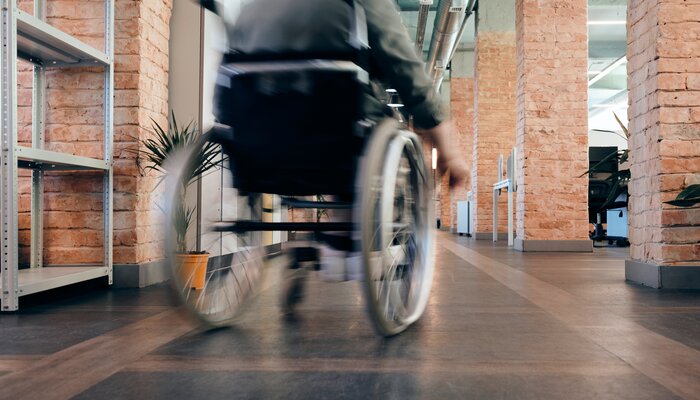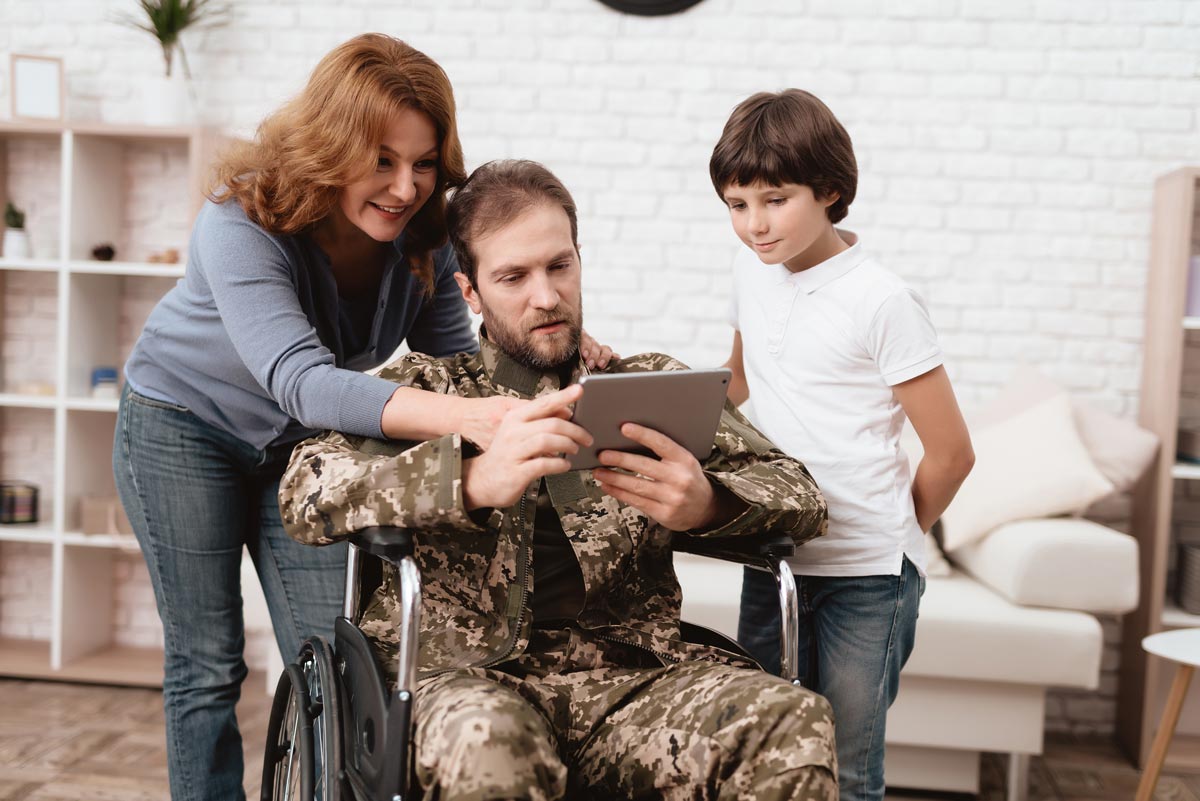Slip and fall accidents are often caused by wet or uneven surfaces, like spills or loose floorboards. Poor lighting makes it hard to see hazards, increasing fall risks. Inadequate footwear, such as high heels or smooth-soled shoes, can also make us more prone to slipping. Weather conditions, like rain or ice, create hazardous walking areas. Loose cords and wires pose tripping dangers, while damaged or improperly installed handrails fail to provide necessary support. Distracted walking, especially with mobile devices, leads to loss of balance. Let's explore further to better understand how we can prevent these accidents.
Key Takeaways
- Wet floors from mopping, spills, and rain increase slip risk significantly.
- Uneven surfaces, such as loose floorboards and worn carpets, are common fall hazards.
- Improperly secured loose cords and wires pose serious tripping dangers.
- Inadequate lighting makes it difficult to see hazards, raising the risk of accidents.
- Distracted walking, often due to mobile device use, leads to increased slip and fall incidents.
Wet or Uneven Surfaces
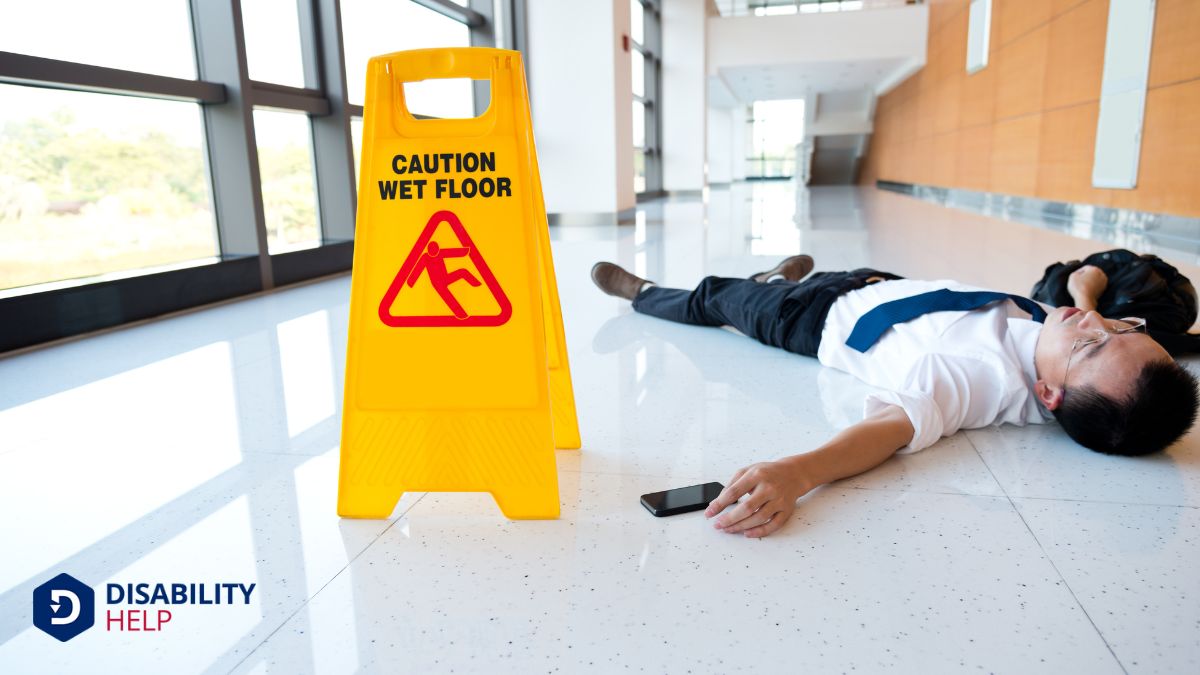
When it comes to slip and fall accidents, wet or uneven surfaces are often the main culprits. We've all encountered wet floors, whether from recent mopping, spills, or rainy weather. These wet conditions notably increase the risk of a slip and fall. Similarly, uneven surfaces like loose floorboards, worn carpets, and recently waxed floors can easily lead to accidents if we're not cautious.
Hazard conditions don't stop there. Uneven sidewalks, potholes, and damaged walkways are also major contributors to falls. Picture walking down a street and suddenly tripping over a cracked sidewalk or stumbling into a pothole. These scenarios are all too common and highlight the importance of maintaining even walking surfaces.
Loose cords and electrical wires pose another threat. Imagine maneuvering a space where cords are strewn across the floor; it's a disaster waiting to happen. Property owners are responsible for ensuring safe environments by addressing these hazards. They must secure loose cables, repair damaged surfaces, and keep walkways dry.
We must also be proactive about safety training, making sure everyone understands the risks and how to mitigate them. By staying vigilant, we can notably reduce the occurrence of slip and fall accidents.
Improper Safety Training
Improper safety training is a major contributor to slip and fall accidents, especially in high-risk industries like construction, mining, and maintenance. Fatal falls often occur in these sectors due to insufficient safety training. The National Institute for Occupational Safety and Health (NIOSH) establishes training standards to prevent such incidents, but when those standards aren't met, the consequences can be severe.
Without proper safety training, employees are ill-prepared to navigate hazardous work environments, increasing the chances of serious injuries or fatalities. Employers have a responsibility to ensure their workers are well-trained. If they fail to provide adequate safety training, they may be held accountable for accidents. This employer's liability underscores the importance of adhering to NIOSH guidelines to reduce risk.
We need to acknowledge that proper safety training is crucial. It equips workers with the knowledge and skills to avoid slip and fall accidents. By investing in thorough training programs, employers can greatly decrease the risk of accidents and create a safer workplace.
Let's prioritize safety and guarantee that every worker receives the training they need to stay safe on the job.
Weather Conditions
Although we often can't control the weather, we can take steps to prevent slip-and-fall accidents caused by inclement conditions. Weather conditions like rain, snow, and ice can turn walking surfaces into slippery hazards that lead to injuries. Inclement weather demands our attention to prevent accidents and maintain safety.
One primary concern during adverse weather is ice hazards. Ice can form quickly and make sidewalks and pathways treacherous. To counter this, salting sidewalks and driveways can reduce the risks significantly.
Snow accumulation is another major issue. Regular shoveling and snow removal help maintain clear and safe paths.
Building owners and cities bear responsibility for keeping walking surfaces safe during adverse weather conditions. Timely maintenance and repairs of any walkway damage are essential to prevent accidents.
Wet surfaces from rain also pose a significant risk. Proper drainage systems and prompt action to dry wet areas can lessen these risks.
Loose Cords and Wires
When we think about common slip and fall hazards, loose cords, and wires often come to mind. Tripping over these hazards can cause serious injuries, so it's vital that we secure all cables properly.
Not only does this prevent accidents, but it also helps avoid liability for any resulting damages.
Tripping Over Hazards
Loose cables and wires can quickly turn a safe environment into a hazardous one. Tripping hazards like loose cables and electrical wires are more common than we might realize and can lead to serious slip-and-fall accidents. When these hazards are present, it's essential to address them promptly to prevent accidents and injuries.
We must understand that the responsibility for damages from such incidents often falls on those who fail to properly secure cables and wires.
By securing cables correctly, we can significantly diminish the risk of these accidents. A safe environment starts with recognizing potential tripping hazards and taking proactive measures. Loose cables and wires should never be left unattended as they pose a constant risk.
Properly securing electrical wires and cables isn't just about avoiding legal responsibility; it's about ensuring the safety of everyone in the area.
We all play a role in maintaining a safe environment. Whether at home or in the workplace, let's be diligent in our efforts to identify and secure any loose cables or wires. By doing so, we can prevent accidents and protect ourselves and others from unnecessary harm.
Securing Loose Cables
A tangled mess of cables and wires can transform any setting into a hazardous landscape. We often overlook the danger posed by loose cords and wires, but tripping over them is a common cause of slip-and-fall accidents. Whether in residential or commercial properties, unsecured cables create serious slipping and falling hazards that can lead to painful injuries.
To prevent these accidents, it's essential to secure cables properly. By doing so, we guarantee safe walking spaces and reduce the risk of a slip and fall accident. Simple steps like using cable organizers, securing cords along walls, or employing cable covers can make a significant difference. When we take the time to secure cables, we help maintain a safe environment for everyone.
Moreover, the responsibility for securing these hazards shouldn't be taken lightly. Failing to do so can result in legal consequences. A slip and fall attorney can confirm that the party responsible for the property may be liable for damages if someone gets injured due to unsecured cords and wires.
Let's prioritize safety by ensuring all cables are securely fastened, thereby minimizing the causes of slipping and falling accidents.
Liability for Accidents
Securing loose cables is just one part of the safety equation; understanding liability for accidents related to these hazards is equally important. When loose cords and wires create tripping hazards, the responsible party must make sure they're secured properly to prevent accidents and potential injuries. Failing to do so can lead to being liable for any damages caused by such hazardous conditions.
In homes, workplaces, and public spaces, proper cord management plays a vital role in reducing slip and fall incidents. Regular inspections and maintenance are essential to identify and rectify any issues with loose cables. By doing this, we can prevent accidents and avoid potential legal liabilities that property owners might face.
When an accident occurs due to tripping over loose cords, determining the responsible party becomes a focal point. If the property owner or manager neglected to secure the cables properly, they could be held accountable for the resulting injuries and damages. As a result, it's critical to stay vigilant and proactive in addressing these hazards.
In essence, to prevent accidents and minimize legal risks, we must prioritize securing cords and conducting regular inspections to ensure a safe environment for everyone.
Damaged Handrails
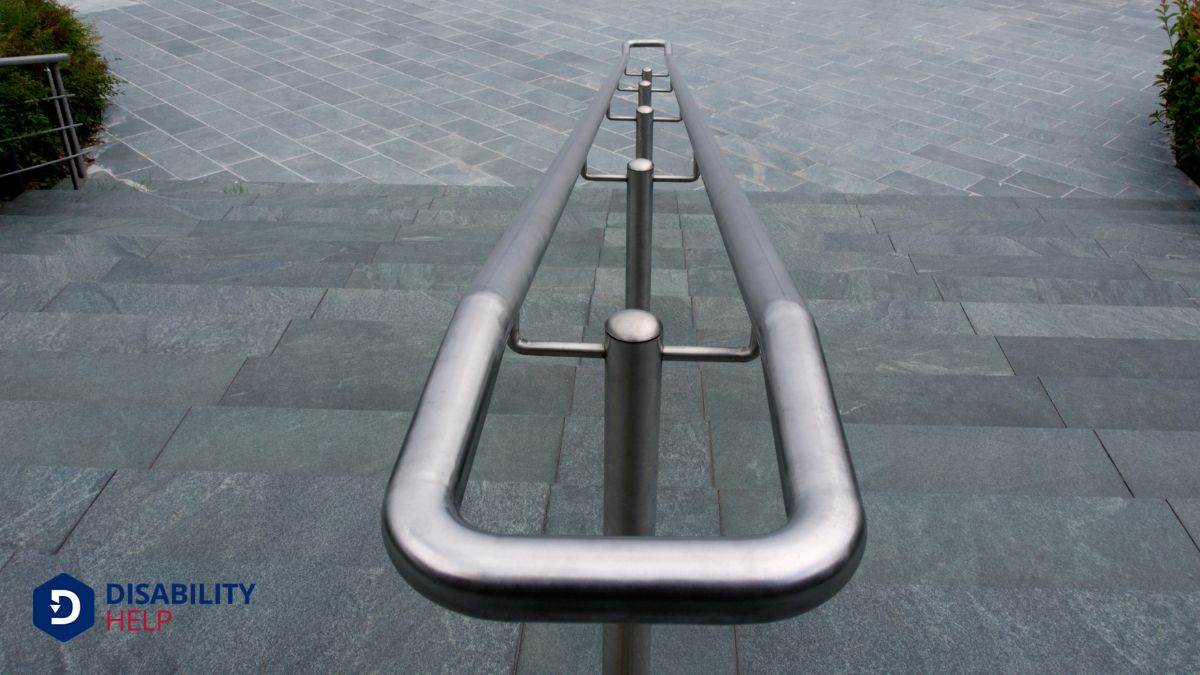
Let's discuss how damaged handrails can lead to slip-and-fall accidents. When handrails aren't structurally sound or properly installed, they fail to provide essential support, causing people to lose balance, especially on stairs or ramps.
Ensuring that handrails are secure and well-maintained is vital for preventing these accidents and complying with safety regulations.
Handrail Structural Integrity
When handrails deteriorate, they can easily transform from safety features into hazards. Damaged handrails compromise their structural integrity, leading to slip-and-fall accidents by failing to provide necessary support and stability. For individuals relying on them for balance, loose or broken handrails can notably increase the risk of falls.
As property owners, we've a responsibility to guarantee that our premises are safe. Handrails are an integral part of any support system, and their proper maintenance can't be underestimated. Regular inspections and timely repairs are essential to uphold the structural integrity of handrails. Neglecting this obligation not only endangers the safety of visitors but also exposes property owners to liability in slip and fall cases.
We must prioritize consistent maintenance to prevent accidents. Inspections should be scheduled regularly to identify any signs of wear and tear or potential defects. Once identified, prompt repairs are vital to restore the handrails to a safe condition. By keeping our handrails in top condition, we can prevent accidents and maintain a secure environment for everyone who uses them.
Proper Handrail Installation
Installing handrails correctly is essential to preventing slip and fall accidents. When handrails are improperly set up, they fail to provide the necessary support and stability, significantly heightening the risk of injury. We've all likely experienced slip and fall incidents where a sturdy handrail could have made a difference. Proper handrail installation is vital for ensuring that individuals can navigate staircases and walkways safely.
Damaged handrails, such as those that are loose or broken, pose a notable hazard, particularly for older adults or individuals with mobility issues. Fall accidents are caused by these compromised supports, which don't offer a secure grip. The list of potential fall accidents includes trips on staircases where handrails aren't up to standard, resulting in personal injuries that could have been avoided.
To maintain a safe environment and prevent accidents, regular inspection and maintenance of handrails are required. Ensuring they're structurally sound and meet safety standards is a legal responsibility for building owners and managers. By committing to proper handrail installation and upkeep, we can reduce the incidence of slip and fall accidents and protect everyone from unnecessary harm.
Poor Lighting
Inadequate lighting is one of the main factors that contribute to slip and fall accidents. When discussing poor lighting, we're talking about situations where insufficient illumination can obscure hazards, making it challenging for us to detect obstacles or changes in elevation.
Dimly lit areas, like stairwells, hallways, or outdoor walkways, greatly heighten the risk of slips and falls. This peril becomes particularly noticeable at night or during inclement weather when visibility is already compromised.
As property owners, it's vital to recognize that we have a responsibility to guarantee proper lighting on our premises to prevent accidents. Studies indicate that adequate lighting can greatly reduce the likelihood of slip and fall incidents.
When we neglect to address inadequate lighting, we inadvertently create dangers that can result in severe injuries for ourselves and others.
Inadequate Footwear
Just as poor lighting can obscure hazards and increase the risk of accidents, inadequate footwear plays a crucial role in slip and fall incidents. Improper footwear, such as shoes with worn-out soles or insufficient grip, can make us more vulnerable to slipping and falling. High heels, flip-flops, and shoes with smooth soles are particularly hazardous on slippery or uneven surfaces.
To better understand the impact of our footwear choices, let's consider the following points:
- High heels: While fashionable, they offer minimal stability and increase the risk of falling.
- Smooth soles: Lack of traction makes maneuvering wet or slick surfaces challenging.
- Improper footwear: Shoes that aren't designed for specific environments can lead to increased accident risk.
- Non-slip shoes: Designed for environments like kitchens or construction sites, they notably reduce the likelihood of slip and fall accidents.
Distracted Navigation
Many of us have found ourselves engrossed in our phones while walking, oblivious to our surroundings. This kind of distracted navigation can lead to a loss of balance and increase the risk of a slip and fall. Distracted walking, especially when texting or using mobile devices, is a growing concern that has led to more accidents. When we're not paying attention to potential hazards in our path, we leave ourselves vulnerable to serious injuries.
Research shows that younger individuals are particularly prone to these incidents. They're often more engaged with their phones, making them less aware of their environment. Distracted navigation contributes to a substantial number of slip and fall incidents, highlighting the importance of staying focused while walking.
We can prevent many of these accidents by simply avoiding distractions and paying closer attention to where we're going. That means putting our phones away and being mindful of our surroundings. By doing so, we not only protect ourselves but also set a good example for others.
Let's all commit to staying focused and reducing the risk of slip and fall accidents caused by distracted navigation.
Frequently Asked Questions
What Are the Most Common Causes of Slip and Falls?
We often find that wet and uneven surfaces, bad weather, poor safety training, loose cords, and neglected maintenance in places like nursing homes are the most common causes of slip and falls. Let's always stay cautious and aware.
What Is the Largest Cause of Slips and Falls?
The largest cause of slips and falls is wet and uneven walking surfaces. We must be vigilant about keeping floors dry and even, ensuring proper maintenance, and installing safety measures like handrails to prevent accidents.
Which of the Following Can Cause a Slip and Fall Injury?
We need to watch out for wet floors, uneven sidewalks, loose rugs, poor lighting, stray cords, and clutter. Neglecting maintenance and wearing improper footwear also lead to slip and fall injuries. Let's stay cautious and prevent accidents.
What Is the Root Cause of a Slip?
The root cause of a slip is a lack of traction between our shoes and the walking surface. Factors like wet floors, loose rugs, or smooth surfaces reduce traction, making slips more likely and increasing the risk of falls.
Conclusion
To sum up, we must acknowledge the common reasons for slip and fall incidents, from wet or uneven surfaces to inadequate footwear. By addressing issues like poor lighting, damaged handrails, and loose cords, we can greatly diminish risks. Weather conditions and improper safety training also play crucial roles. Let's stay alert and proactive in creating safer environments for everyone. Together, we can prevent accidents and guarantee a safer space for all.


